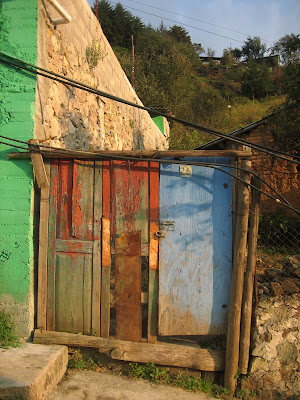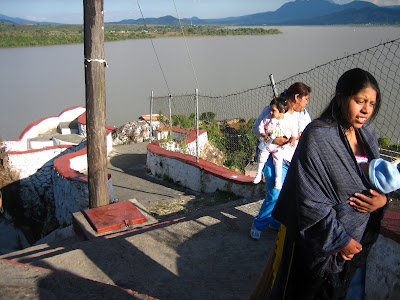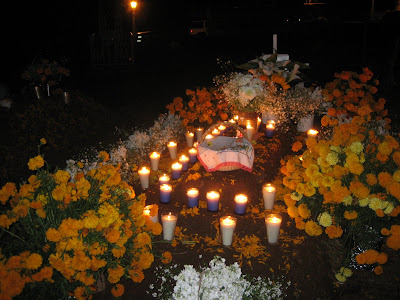A great deal less comfortable and even less whimsical than a hot air balloon, a friend and I decided to bus it to the butterfly sanctuary. 9 hours and 5 buses later, we arrived at our base town, Angngueo. Early in the morning, after a freezing night in bed (we were in the mountains), we hopped on the bus to the sanctuary (refer delapidated vehicle below) ...

Finally we reached a point where the road was too narrow for the bus and we hopped off, nursing our bruised tailbones and frozen, white-kruckled hands. It was a further 4km hike up the mountain to get to the butterflies. Passing us with embarassing speed along the way were some sensible people atop animals.

It was an amazing sight for which pictures simply cannot do justice. These butterflies migrate annually from the colder parts of North America and Canada to breed and escape the freezing temperatures. Although, it's pretty damn cold in Mexico too.
The new generations will return to the exact spot year after year which is suspected to be because of the sun's position and possibly also the odour of the previous year's dead migrants. Because it was early in the morning, most of them were just sleeping. The tree branches were heavily weighed down with the fluttering insects and swayed gently as they each vied for a spot on a leaf.

One of the major industries of the region is timber logging. Although there are designated sanctuaries for the butterflies, logging is eating up a big chunk of the habitat - even inside these protected zones. It's providing employment for the locals, but at the expense of the butterflies. Another tough, not-easily resolved issue.
















































